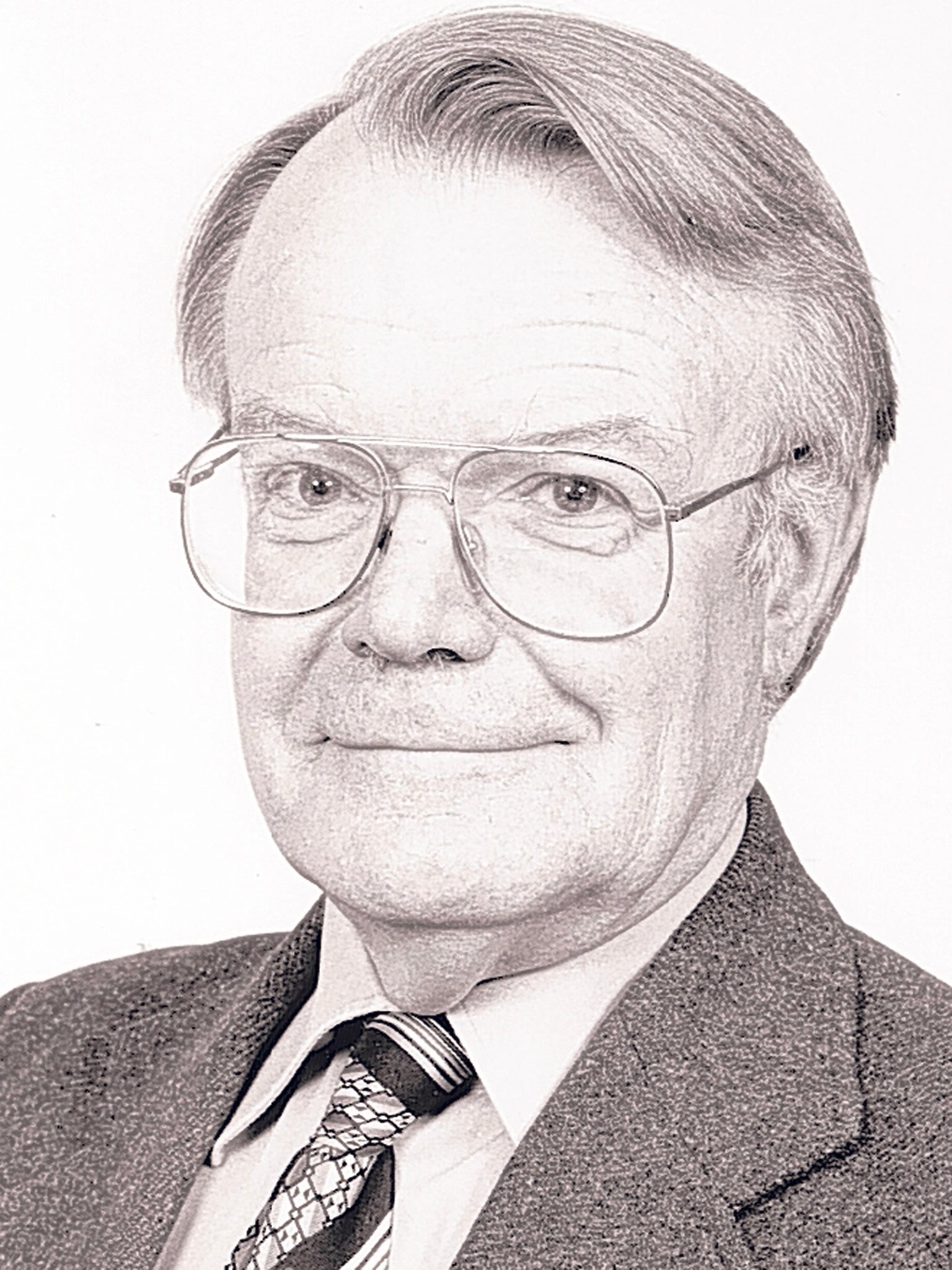Professor Keith Clayton: Pioneering environmental scientist

In 1967 we didn't know that man-made chemicals could hole the stratospheric ozone layer. The term "global warming" had not been coined, and the link between climate change and human activities was not well-made. Some scientists thought a new ice age was approaching in the coming decades, not believing that polar and glacier ice would be melting at record rates, leading to unprecedented rates of rises in sea level.
Keith Clayton's decision in 1967 to accept the challenge of setting up a School of Environmental Sciences, the brainchild of Lord Solly Zuckerman, at the new University of East Anglia in Norwich was a bold one. He became the founding Dean and co-founding Professor of the School of Environmental Sciences at UEA a year before the first students were admitted. The discipline of environmental science was virtually unheard of 45 years ago, so setting up a centre to research and teach this new subject was radical, and much of the established science world was dismissive.
Keith Martin Clayton was born in 1928 and went to Bedales School in Hampshire and the University of Sheffield, gaining a first class degree in Geography, followed by an MSc and PhD in 1958, also at Sheffield. He was appointed lecturer in Geography at the London School of Economics in 1953 then promoted to Reader in 1964.
When he assumed his post at UEA, scientists still worked within very tight discipline boundaries, but Clayton sought a new way of looking at the planet and its people. His energy and enthusiasm for his science, the School of Environmental Sciences, and UEA itself was infectious, and while he was unapologetically outspoken at times, his leadership was dynamic and inspirational.
Having opened the doors for a new wave of research, Clayton helped set up the Climatic Research Unit at UEA four years later, recruiting the renowned climatologist Hubert Lamb from the UK Meteorological Office to lead it. CRU is today recognised as one of the world's leading institutions concerned with the study of natural and anthropogenic climate change.
Emeritus Professor Tim O'Riordan, who worked alongside Clayton for much of his career, said: "The science of maintaining the planet largely began here in Norwich with Keith. More people than we realise owe a great debt to him, and I certainly was one of those. He set a trend which dozens of campuses are only now seeking to emulate. He broke the mould of single subject science and opened up an era of coordinated and communicative science which embraced all manner of people throughout the world."
Clayton was Pro Vice Chancellor at UEA from 1971-73 and served on numerous national committees including the National Environmental Research Council, the University Grants Committee, where he was vice chair, and the National Radiological Protection Board. He was an advisor to government departments on environmental matters, helped shape international environmental change strategies and received a CBE in 1984 for services to the University Grants Committee and UEA.
In 1960 he set up GeoAbstracts, an abstracting and indexing enterprise that allowed geographers and environmental scientists to discover one another's work more easily. This, again, was groundbreaking; it was bought by the academic publishing giant Elsevier in 1985, and was a forerunner of the online citation systems used by academics around the world today.
While he laid the foundations for a school that soon became internationally renowned, Clayton also found time to conduct leading research in quantitative geomorphology, the study of earth surface landforms, particularly utilising the newly emerging images of the earth's surface as seen from satellites. He understood the importance of being able to quantify processes such as glacial and coastal erosion and in the 1980s he was quick to exploit the rapidly developing personal computer to assist data manipulation gained from remotely sensed images. He was in the vanguard of modern geomorphology and this was recognised in 1989 with the award of the Patron's Medal of the Royal Geographical Society.
Much of his varied research was based in East Anglia. He strongly advocated allowing natural coastal processes to operate unhindered as a far as was practicable, believing that healthy sand-rich beaches, fed by natural erosion and deposition cycles, are a more sustainable coastal defence than concrete sea walls. He also realised that geomorphological research was important for society because the siting of installations with a long-intended lifetime, such as nuclear waste repositories, had to be based on robust information about susceptibility to long-term erosion, particularly glacial erosion.
The Vice Chancellor of UEA, Professor Edward Acton, said of Clayton: "He was hugely influential, both in his field and in the University. However, his legacy lives on proudly in the School of Environmental Sciences that he did so much to build."
In retirement Clayton was a Liberal Democrat Councillor, a passionate walker, gardener and woodsman, although his rather gung-ho attitude to tree-felling resulted in at least one near-fatal accident involving a falling tree and a well.
Keith Martin Clayton, environmental scientist: born 25 September 1928; Professor of Environmental Sciences, University of East Anglia 1967-93, then Emeritus; CBE 1984; married 1950 (divorced 1976; three sons, one daughter); died 12 February 2013.
Subscribe to Independent Premium to bookmark this article
Want to bookmark your favourite articles and stories to read or reference later? Start your Independent Premium subscription today.

Join our commenting forum
Join thought-provoking conversations, follow other Independent readers and see their replies